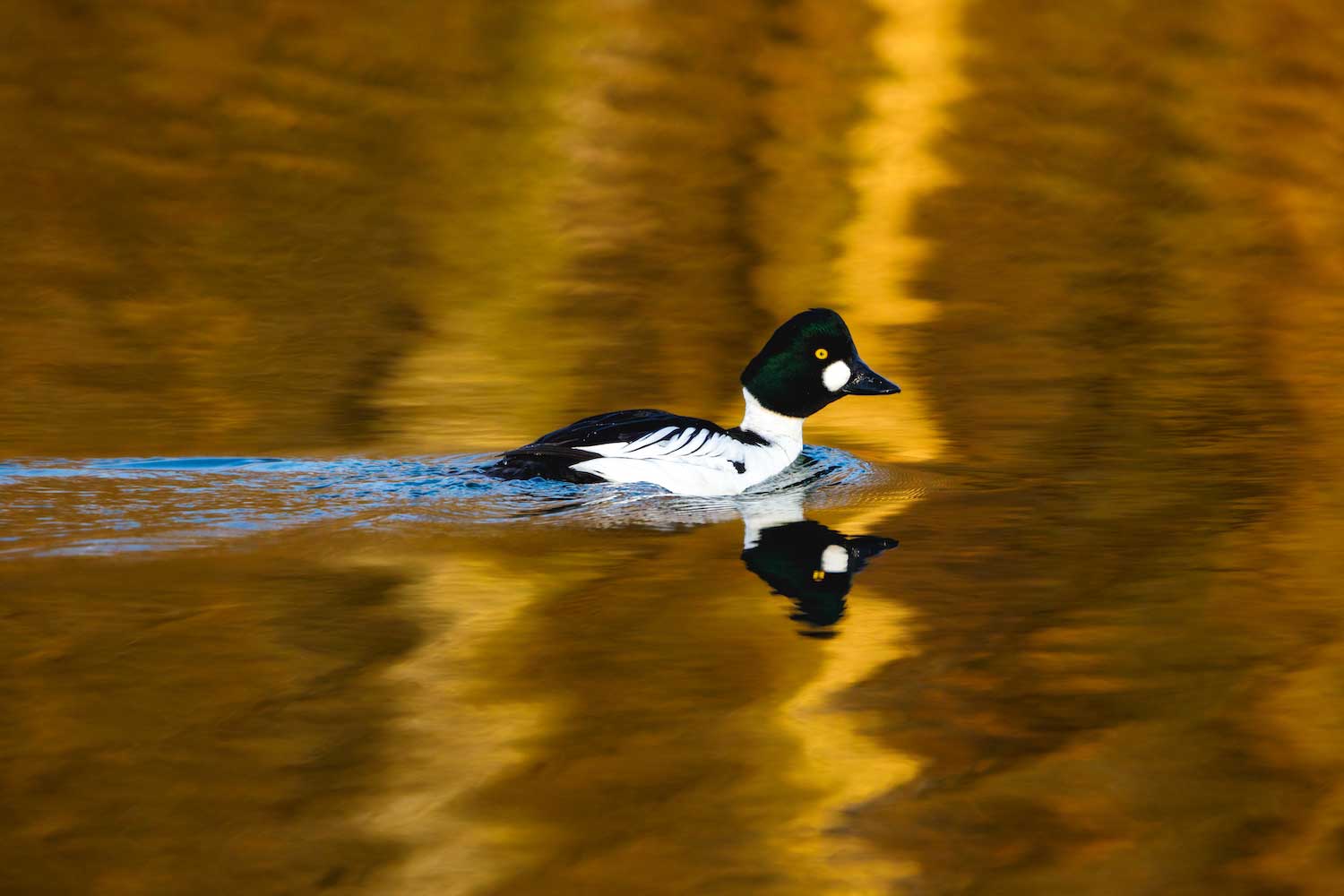Watch out for goldeneyes on local lakes throughout winter

Goldeneye might sound like a character from a James Bond movie, but in our neck of the woods common goldeneyes are one of the ducks that populate our waterways each winter.
In northern Illinois, common goldeneyes are winter-only residents, typically arriving in late fall or early winter and then pulling up stakes starting in April to head back to their breeding grounds across Canada and the far northern portions of the United States, according to the Illinois Department of Natural Resources. While they are here, look for them on lakes and other large bodies of water.
In flight, these birds can garner some attention both because they are fast — reaching speeds of up to 40 mph — and because their wings make a whistling sound, earning them the nickname "the whistler," according to the National Audubon Society. The whistling sound is even more pronounced in cold weather.
Like many duck species, common goldeneyes are sexually dimorphic, which means the males and females are different in appearance. Among these dimorphic species, males are usually more eye-catching, and that is the case with the goldeneyes. Male common goldeneyes are mostly white and black with iridescent green heads, while females are a more drab grayish-brown color with brown heads, according to the Cornell Lab of Ornithology. Males have a black bill, while females' bills are black with a yellowish tip.
Both male and female goldeneyes have their namesake golden yellow eyes as adults, but males' eyes are brighter and more vivid than females. When they hatch, their eyes are a grayish-brown color and they morph through several color changes, from purplish-blue to blue to greenish-blue to greenish-yellow before achieving the final trademark golden yellow color, the Cornell Lab reports.
Starting in winter and continuing through early spring, male goldeneyes will strut their stuff in an attempt to attract a female mate, and they put on quite a show. All told, they courtship display can include as many as 14 different dance moves, all with names designed to convey the movements, such as "head throw kick" and "bowspirit," according to the Cornell Lab. Males will also bend their heads all the way backward and then quickly whip it forward while using their feet to kick up water.
Once a female has been wooed and the pair mate, it's the female who chooses a spot for a nest. These ducks nest in tree cavities and nesting boxes, sometimes as high as 40 feet in the air. The females will lay between four and nine eggs that will hatch between 27 days and 33 days later, according to the Cornell Lab. The young chicks are born alert and are ready to leave the nest as soon as a day after hatching. Sometimes, leaving the nest involves a big drop to the ground from their nests high up in trees.
Although goldeneye chicks are able to leave the nest so soon after hatching, they aren't entirely independent. They can feed themselves, but their mothers will keep an eye on them to protect them. Some females will abandon their chicks soon after they hatch, and those young ducks will typically join another female's brood for protection, the Cornell Lab reports.
Their diet changes with the seasons. In the summer, they primarily eat aquatic insects, then switch over to more plant matter in the fall, according to the National Audubon Society. They also eat a variety of crustaceans, mollusks, frogs, small fish, worms and leeches.
Common goldeneyes are diving ducks, which means they dive down into the water, submerging themselves, while foraging for food. They often coordinate their dives with other goldeneyes, and they can stay under water for about a minute, according to the Cornell Lab. On occasion, you may see them dabbling for food like mallards and some other ducks do, upending themselves and putting just their head underwater while searching for food.
The common goldeneye is one of two goldeneye species in North America. The other, the Barrow's goldeneye, is far less common and has a much more limited range, mostly breeding along the Pacific Coast of Canada and Alaska and smaller regions along the East Coast of Canada, according to the Cornell Lab.
